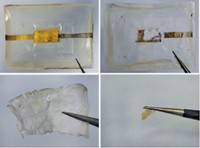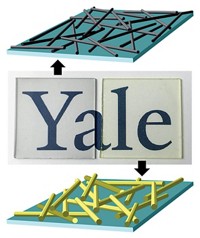Advertisement
Grab your lab coat. Let's get started
Welcome!
Welcome!
Create an account below to get 6 C&EN articles per month, receive newsletters and more - all free.
It seems this is your first time logging in online. Please enter the following information to continue.
As an ACS member you automatically get access to this site. All we need is few more details to create your reading experience.
Not you? Sign in with a different account.
Not you? Sign in with a different account.
ERROR 1
ERROR 1
ERROR 2
ERROR 2
ERROR 2
ERROR 2
ERROR 2
Password and Confirm password must match.
If you have an ACS member number, please enter it here so we can link this account to your membership. (optional)
ERROR 2
ACS values your privacy. By submitting your information, you are gaining access to C&EN and subscribing to our weekly newsletter. We use the information you provide to make your reading experience better, and we will never sell your data to third party members.
Materials
Nanocomposite paper device stores energy
August 20, 2007
| A version of this story appeared in
Volume 85, Issue 34
Carbon nanotubes, cellulose, and a room-temperature ionic liquid have been combined to create a nanocomposite paper that functions as a thin, lightweight, flexible energy-storage device (Proc. Natl. Acad. Sci. USA 2007, 104, 13574). "The paper can be rolled up, twisted, or bent to any curvature and is completely recoverable," say Victor L. Pushparaj and colleagues at Rensselaer Polytechnic Institute, Troy, N.Y. The nanotubes, nanoporous cellulose, and imidazolium-based ionic liquid serve as the electrodes, separator, and electrolyte, respectively, in an integrated nanocomposite layer. These layers can be stacked to create batteries, supercapacitors, and hybrids of these two types of devices. The researchers note that the discharge capacity and performance they observe "compare well" with figures reported for other flexible energy-storage devices. And, they add, their supercapacitors can provide a quick burst of energy over a much wider temperature range than commercial supercapacitors. The team has yet to develop a way to inexpensively mass-produce the devices, which might be used in smart cards, displays, and implantable medical devices.





Join the conversation
Contact the reporter
Submit a Letter to the Editor for publication
Engage with us on Twitter